|
Books Should Be Free Loyal Books Free Public Domain Audiobooks & eBook Downloads |
|
|
Books Should Be Free Loyal Books Free Public Domain Audiobooks & eBook Downloads |
|
Fiction |
|---|
|
Book type:
Sort by:
View by:
|
By: Dinah Craik (1826-1887) | |
|---|---|
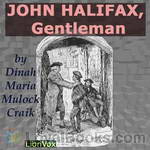 John Halifax, Gentleman
John Halifax, Gentleman
This novel, published in 1856, was one of the popular and beloved novels in the Victorian era. It is told in the first person by Phineas Fletcher, an invalid son of a Quaker tanner who is presented to us in the beginning as a lonely youth. John Halifax, the first friend he ever had, is a poor orphan who is taken in by his father to help in the work which his sickly son can't constantly do. Phineas tells us in an unforgettable way how John succeeded in rising from his humble beginning and become a wealthy and successful man. But with the money come horrible troubles... In an unforgettable manner, we learn to know all the characters of the novel as if they really lived. | |
By: L. Adams Beck (1862-1931) | |
|---|---|
 The ninth vibration and other stories
The ninth vibration and other stories
This is a collection of the following short stories: The Ninth Vibration -- The Interpreter : A Romance of the East -- The Incomparable Lady : A Story of China with a Moral -- The Hatred of the Queen : A Story of Burma -- Fire of Beauty -- The Building of the Taj Majal -- How Great is the Glory of Kwannon! -- The Round-Faced Beauty. Many of them are romantic, some of them are fantasy and others are occult fiction.(Introduction by Linda Andrus) | |
By: Rex Beach (1877-1949) | |
|---|---|
 Silver Horde
Silver Horde
The Silver Horde , is set in Kalvik, a fictionalized community in Bristol Bay, Alaska, and tells the story of a down on his luck gold miner who discovers a greater wealth in Alaska's run of salmon (silver horde) and decides to open a cannery. To accomplish this he must overcome the relentless opposition of the "salmon trust," a fictionalized Alaska Packers' Association, which undercuts his financing, sabotages his equipment, incites a longshoremen's riot and bribes his fishermen to quit. The story line includes a love interest as the protagonist is forced to choose between his fiance, a spoiled banker's daughter, and an earnest roadhouse operator, a woman of "questionable virtue." | |
 Flowing Gold
Flowing Gold
Unfairly given a dishonorable discharge from the army, Calvin Gray goes to Dallas, where he manages to win the trust of a jeweler and is able to sell a number of diamonds to the newly oil rich Briskows. He makes friends with the family and helps them adjust to their newly found riches. The Briskows, in turn, help him prove false the charges that caused his dismissal from the army. | |
By: Kate Douglas Wiggins (1856-1923) | |
|---|---|
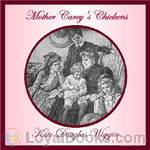 Mother Carey’s Chickens
Mother Carey’s Chickens
“When Captain Carey went on his long journey into the unknown and uncharted land, the rest of the Careys tried in vain for a few months to be still a family, and did not succeed at all. They clung as closely to one another as ever they could, but there was always a gap in the circle where father had been….. The only thing to do was to remember father's pride and justify it, to recall his care for mother and take his place so far as might be; the only thing for all, as the months went on, was to be what mother called the three Bs -- brave, bright, and busy... | |
By: Robert J. Burdette (1844-1914) | |
|---|---|
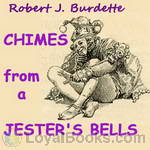 Chimes From A Jester’s Bells
Chimes From A Jester’s Bells
Part I. The Story of Rollo; Mr. Holliday knows all there is to know about raising children, or at least he thinks he does. His attempts to train his son, Rollo, "in the way he should go," are well-meant, but hilariously unsuccessful--or are they? I believe this is a sort of spoof of the “Rollo” series for children, that was written by Jacob Abbot in the mid 19th century. The characters have the same names and the chapters have a little Q&A at the end like the Abbot books, except these are definitely tongue-in-cheek... | |
By: Dolf Wyllarde | |
|---|---|
 The Pathway of the Pioneer
The Pathway of the Pioneer
The story of seven girls who have banded themselves together for mutual help and cheer under the name of “Nous Autres.” They represent, collectively, the professions open to women of no deliberate training, though well educated. They are introduced to the reader at one of their weekly gatherings and then the author proceeds to depict the home and business life of each one individually. (From the 1909 back-of-book advertisement) | |
By: Carolyn Steward Taylor | |
|---|---|
 Werewolf -- Five Pieces
Werewolf -- Five Pieces
Five stories and essays about werewolves. | |
By: Laurence M. Janifer (1933-2002) | |
|---|---|
 Supermind
Supermind
FBI agent Kenneth Malone lives in a world where psionic powers such as telepathy and teleportation exist. He must cope with them as well as an FBI Director who leaves Malone continually confused about what situation he is being asked to handle and what he is expected to do about it. Someone or something is causing confusion in the U.S. Government, Unions, The Mafia, and other sectors of society and Malone has been given the job of finding the source of the confusion. A good story composed of science fiction and slap stick comedy with a bit of romance thrown into the mix. | |
By: William Carleton (1794-1869) | |
|---|---|
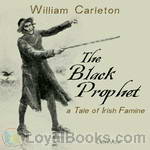 The Black Prophet - A Tale of Irish Famine
The Black Prophet - A Tale of Irish Famine
A story about the Irish, just before the onset of the famine of 1847, with all the color and dialogue of a man who lived it. | |
By: Arthur Morrison (1863-1945) | |
|---|---|
 A Child of the Jago
A Child of the Jago
Arthur George Morrison (1 November 1863, Poplar, London - 4 December 1945, Chalfont St Peter, Buckinghamshire) was an English author and journalist known for his realistic novels about London's East End and for his detective stories. Morrison's most famous novel is A Child of the Jago, published in 1896, The novel described in graphic detail living conditions in the East End, including the permeation of violence into everyday life (it was a barely fictionalized account of life in the Old Nichol Street Rookery). (Introduction by Wikipedia and Algy Pug) | |
By: David Garnett (1892-1981) | |
|---|---|
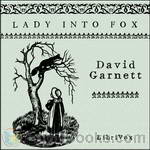 Lady into Fox
Lady into Fox
When Sylvia Tebrick, the 24-year-old wife of Richard Tebrick, suddenly turns into a fox while they are out walking in the woods, Mr. Tebrick sends away all the servants in an attempt to keep Sylvia's new nature a secret. Both then struggle to come to terms with the problems the change brings about. | |
By: Harold L. Goodwin (1914-1990) | |
|---|---|
 Rip Foster Rides the Gray Planet
Rip Foster Rides the Gray Planet
"Foster, Lieutenant, R. I. P.," blared the voice horn, and five minutes later Rip Foster was off into space on an assignment more exciting than any he had ever imagined. He could hardly believe his ears. Could a green young Planeteer, just through his training, possibly carry out orders like these? Sunny space, what a trick it would be! From the moment Rip boards the space ship Scorpius there is a thrill a minute. He and his nine daring Planeteers must cope with the merciless hazing of the spacemen commanding the ship, and they must outwit the desperate Connies, who threaten to plunge all of space into war... | |
 Smugglers' Reef
Smugglers' Reef
Seventh entry in the Rick Brant Science Mystery Adventure series has Rick and buddy Scott using infrared technology on the trail of smuggling no-goodniks in the vicinity of Spindrift Island, Rick's home and location of his dad's laboratory, off the New Jersey & New York coast. | |
By: Mrs. Henry Wood (1814-1887) | |
|---|---|
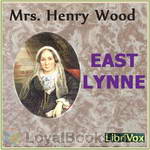 East Lynne
East Lynne
Ellen Wood (1814-1887) was an English novelist, better known as Mrs. Henry Wood. She wrote over 30 novels, many of which (especially East Lynne which was a Victorian best seller and is still sometimes performed as a drama) enjoyed remarkable popularity. Lady Isabel Carlyle, a beautiful and refined young woman, leaves her hard-working but neglectful lawyer-husband and her infant children to elope with an aristocratic suitor. After he deserts her, and she bears their illegitimate child, Lady Isabel disguises herself and takes the position of governess in the household of her husband and his new wife". Summary by Wikipedia | |
By: Charles Alexander Eastman (1858-1939) | |
|---|---|
 Indian Child Life
Indian Child Life
The author was raised as an American Indian and describes what it was like to be an Indian boy (the first 7 chapters) and an Indian Girl (the last 7 chapters). This is very different from the slanted way the white man tried to picture them as 'savages' and 'brutes.'Quote: Dear Children:—You will like to know that the man who wrote these true stories is himself one of the people he describes so pleasantly and so lovingly for you. He hopes that when you have finished this book, the Indians will seem to you very real and very friendly... | |
By: Pauline Elizabeth Hopkins (1859-1930) | |
|---|---|
 Contending Forces
Contending Forces
Pauline Elizabeth Hopkins, despite an impressive record of productivity and creativity as a novelist, playwright, short fiction writer, editor, actress, and singer, is an African-American woman writer who has essentially been consigned to the dustbins of American literary history. Though contemporary with Frances Ellen Watkins Harper, Charles W. Chesnutt, and Paul Laurence Dunbar, Hopkins is only now beginning to receive the kind of critical attention that Harper has enjoyed for a slightly longer period and that Chesnutt and Dunbar have always had... | |
By: Mary T. Waggaman (1846-1931) | |
|---|---|
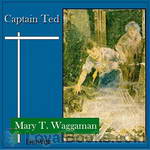 Captain Ted
Captain Ted
When tragedy hits his family, in the form of a sudden illness to his father, young Teddy Thornton is forced to leave school and find work to help support his family. Without his realization he is thrown into a world of crime and counterfeiting. Will he do the right thing, or will he unwittingly be drawn down the wrong path? And will the mystery of Heron Hall be solved? | |
By: Fanny Fern | |
|---|---|
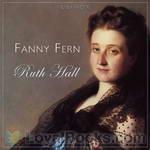 Ruth Hall
Ruth Hall
This is a COMPELLING semi-autobiography of a woman who experienced severe highs and lows! Starting many things at a very young age in life & experiencing incredible happiness! Only all too soon to find herself in extreme opposite situations. This book shows some of the true heartlessness that some human beings can display, as well as some family. It conveys hypocrisy of some in the religious world. It also displays true grit and what desperation can do to drive a person! This book will inevitably cause the reader to experience several emotions and thoughts, some pleasant, some not so nice. "Live" the journey along with the author! A MUST read! (Written by Deborah Knight) | |
By: F. M. Mayor (1872-1932) | |
|---|---|
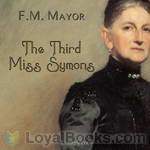 The Third Miss Symons
The Third Miss Symons
Miss Mayor tells this story with singular skill, more by contrast than by drama, bringing her chief character into relief against her world, as it passes in swift procession. Her tale is in a form becoming common among our best writers; it is compressed into a space about a third as long as the ordinary novel, yet form and manner are so closely suited that all is told and nothing seems slightly done, or worked with too rapid a hand. | |
By: Thomas Beer | |
|---|---|
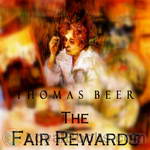 The Fair Rewards
The Fair Rewards
"The Fair Rewards" by Thomas Beer . . . is a really distinguished novel. The writing is far above the average: it has style and sophistication and personality, intermingled with a truly vivid show of imagination. It even borders on brilliancy, but it is a hard, cold, cynical sort of brilliancy that chills. It almost hurts . . . The title itself is indicative of cynicism. It is derived from Shakespeare's quotation, "These be the fair rewards of those that love," and it is an ironical reference, for Mark Walling, the blind, simple, loving idolater, in return for his great and unselfish devotion to Margot, reaps selfishness and ingratitude and lack of consideration... | |
By: Francis Coventry (1725-1754 or 1759) | |
|---|---|
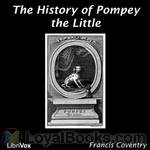 The History of Pompey the Little
The History of Pompey the Little
"Pompey, the son of Julio and Phyllis, was born A.D. 1735, at Bologna in Italy, a place famous for lap-dogs and sausages." At an early age he was carried away from the boudoir of his Italian mistress by Hillario, an English gentleman illustrious for his gallantries, who brought him to London.The rest of the history is really a chain of social episodes, each closed by the incident that Pompey becomes the property of some fresh person. In this way we find ourselves in a dozen successive scenes, each strongly contrasted with the others... | |
By: Cyrus Townsend Brady (1861-1920) | |
|---|---|
 And Thus He Came
And Thus He Came
These short stories, perhaps we might call them modern parables, are not the usual fare of warm and fuzzy Christmas stories (pleasing as those are) but rather life events and crises triggered by Christmas, present or imminent. Brady was a journalist, historian, adventure writer, and Episcopal priest. | |
By: Alice B. Emerson | |
|---|---|
 Ruth Fielding of the Red Mill
Ruth Fielding of the Red Mill
Brave, adventurous and loyal, recently-orphaned Ruth Fielding is sent to live with her estranged Uncle Jabez at the Red Mill in Cheslow, New York. A new town means making new friends, and the teenage Ruth quickly befriends the children of a wealthy merchant. But as the relationship between her and her uncle becomes strained and she attempts to become friends with a very disagreeable girl, will Ruth's cheery disposition be enough to get her through?This is the first of the Ruth Fielding series, with follows Ruth and her friends from adolescence into early adulthood. | |
 Ruth Fielding at Briarwood Hall
Ruth Fielding at Briarwood Hall
In this, the second book of the Ruth Fielding series, Ruth goes to boarding school with her best friend Helen. When they get there, Ruth starts her own sorority called the SweetBriars for the new girls. Her sweet group of girls conflicts with the two other sororities the Upedes and the Fussy Curls. In the midst of settling in to the new place, there is a campus rumor about a legend of the marble harp playing ominously at night. But when the French teacher is in a fright, will Ruth be able to solve this mystery?The Ruth Fielding series has influenced several other major series that came later, including Nancy Drew, the Dana Girls, and Beverly Gray. | |
By: Frances Trego Montgomery (1858-1925) | |
|---|---|
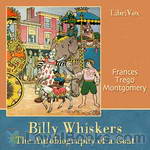 Billy Whiskers, the Autobiography of a Goat
Billy Whiskers, the Autobiography of a Goat
This delightful children's story can be enjoyed by kids and adults alike! A mischievous goat, Billy Whiskers, gets into trouble so often that the book could be named, "Billy Trouble Whiskers"! This humorous story will bring you many chuckles and give you a chance to get lost in Billy's adventures with childlike enthusiasm. From riding in a police car, to being a firehouse mascot, getting married, and finding himself a circus goat, Billy's adventures will certainly keep you entertained! (Introduction by Allyson Hester) | |
By: Zoe Anderson Norris | |
|---|---|
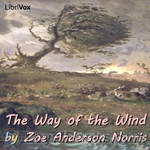 The Way of the Wind
The Way of the Wind
From the comfort of the hills of Kentucky traveled Celia and her husband Seth to the desolate prairies of Kansas, where cyclones, tornadoes, and endless wind were to greet them. Always, there was the wind cutting across the plains as the young couple builds their home while working the soil, while Seth awaits the wise men of the east to begin building the magic city where he has staked his territory on the plains. But sometimes life plays cruel tricks upon us. Sometimes our hopes are dashed by happenstance... | |
By: Susanna Rowson (1762-1824) | |
|---|---|
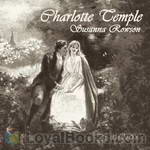 Charlotte Temple
Charlotte Temple
Charlotte Temple, a cautionary tale for young women, follows the unfortunate adventures of the eponymous heroine as she is seduced by a dashing soldier, Montraville. Influenced by both her lover and an unruly teacher at her boarding school, she is persuaded to run away to America, where she is eventually abandoned by Montraville after he becomes bored, leaving her alone and pregnant. First published in England in 1791, it went on to become America's bestselling novel, only being ousted by Harriet Beecher Stowe's Uncle Tom's Cabin. | |
By: Jim Kjelgaard (1910-1959) | |
|---|---|
 The Black Fawn
The Black Fawn
Bud Sloan was an orphan who had been 'sold out' of the orphanage to work on a farm once he'd been old enough to labor. The farm where he was to work was owned by an aging farmer and his wife who had raised a large family and were now left alone. One day, after his chores were done, Bud wandered into the woods nearby and with mouth agape, he noticed a newborn jet black fawn all alone and apparently confused in his new surroundings. Bud resolved that day that this baby fawn was just like himself, an orphan, and would be bound to him in spirit... | |
By: Percy Marks (1891-1956) | |
|---|---|
 The Plastic Age
The Plastic Age
The Plastic Age (1924) is a novel by Percy Marks, which tells the story of co-eds at a fictional college called Sanford. With contents that covered or implied hazing, partying, and "petting", the book sold well enough to be the second best-selling novel of 1924. The following year, it was adapted into a film of the same name, starring Clara Bow. | |
By: Leonid Nikolayevich Andreyev (1871-1919) | |
|---|---|
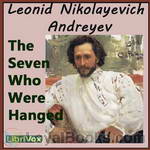 The Seven Who Were Hanged
The Seven Who Were Hanged
"I am very glad that "The Story of the Seven Who Were Hanged" will be read in English. The misfortune of us all is that we know so little, even nothing, about one another—neither about the soul, nor the life, the sufferings, the habits, the inclinations, the aspirations of one another. Literature, which I have the honor to serve, is dear to me just because the noblest task it sets before itself is that of wiping out boundaries and distances."-- Leonid Andreyev, in a letter to Herman Bernstein | |
By: Sōseki Natsume (1867-1916) | |
|---|---|
 Botchan
Botchan
Botchan is the story of a young math teacher from Tokyo whose first assignment takes him to a middle school in the country side. His arrival there is not very lucky: The pupils are bound to test his perseverance and cheerily comments every one of his perceived missteps. In the teacher's room, he soon finds himself in the middle of an intrigue between the jovial "Porcupine" and the fat "Hubbard Squash" on one side, and the effeminate "Red Shirt" and his follower "Clown" on the other. Will Botchan choose the right side in the end? Botchan - with morality as the main theme - is one of the most popular novels in Japan... | |